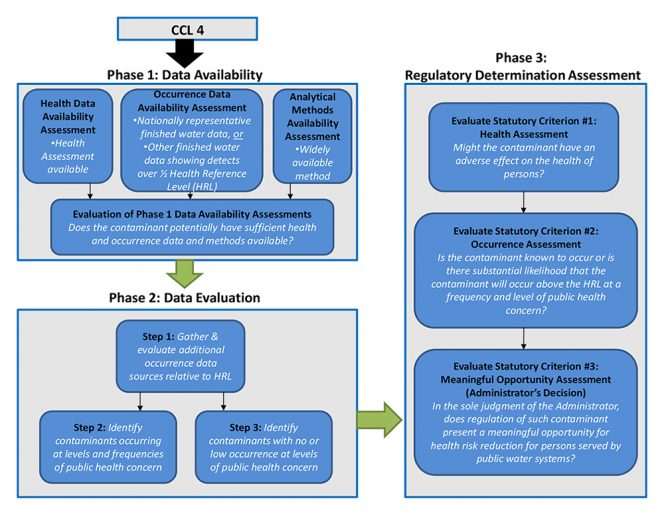The U.S. EPA has taken several steps to implement its PFAS Action Plan aimed at protecting drinking water. PFAS are a large group of man-made chemicals used in consumer products and industrial processes. In use since the 1940s, PFAS are resistant to heat, oils, stains, grease, and water — properties that contribute to their persistence in the environment.
The Safe Drinking Water Act (P.L. 93-523, 1974) requires that, every five years, EPA must publish a list of contaminants, known as the Contaminant Candidate List or CCL, that are known or anticipated to occur in public water systems and are not currently subject to EPA drinking water regulations. The EPA publishes draft CCLs for public comment and considers those comments prior to issuing final lists. After issuing the final CCL, the EPA determines whether or not to regulate no fewer than five contaminants on the CCL through a process known as a Regulatory Determination. The EPA publishes preliminary regulatory determinations for public comment and considers those comments prior to making final regulatory determinations. If the EPA makes a positive regulatory determination for any contaminant, it will begin the process to establish a national primary drinking water regulation for that contaminant.
On February 20, 2020, EPA proposed regulatory determinations for perfluorooctanesulfonic acid (PFOS) and perfluorooctanoic acid (PFOA) in drinking water. The process EPA will go through to consider establishing a national primary drinking water regulation is shown in graphic.
EPA also issued a supplemental proposal to ensure that new uses of certain persistent long-chain PFAS chemicals in surface coatings cannot be manufactured or imported into the United States without notification and review under the Toxic Substances Control Act (P.L. 94-469, 1976). EPA also released an updated list of 172 PFAS chemicals subject to Toxics Release Inventory reporting as required by the National Defense Authorization Act for Fiscal Year 2020. In addition, EPA is in the early scoping stages of risk assessments for PFOA and PFOS in biosolids to understand any potential health impacts.











